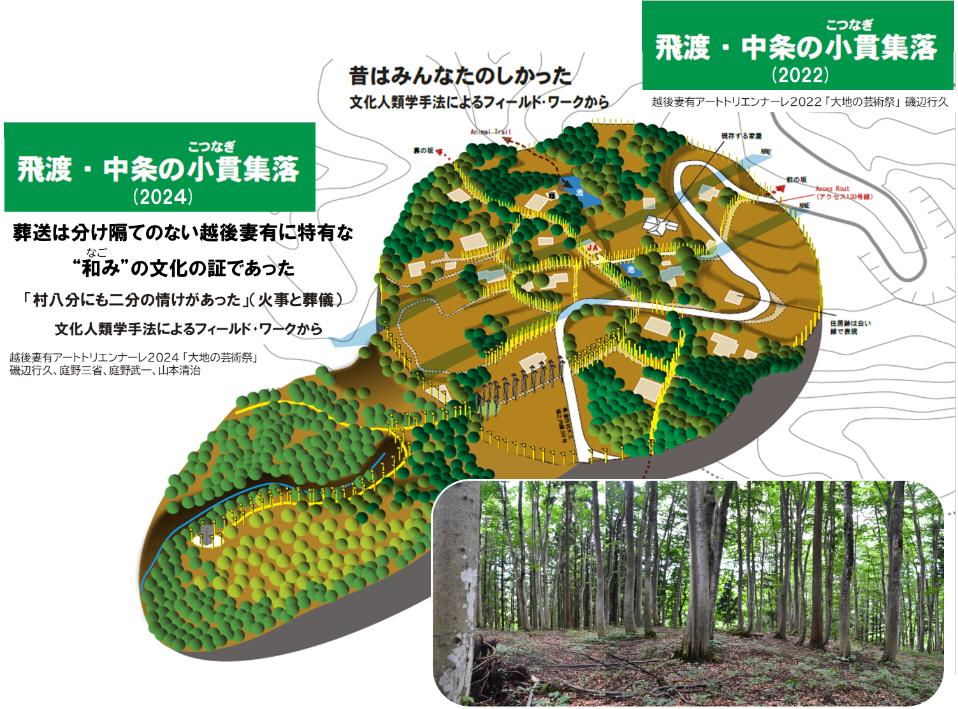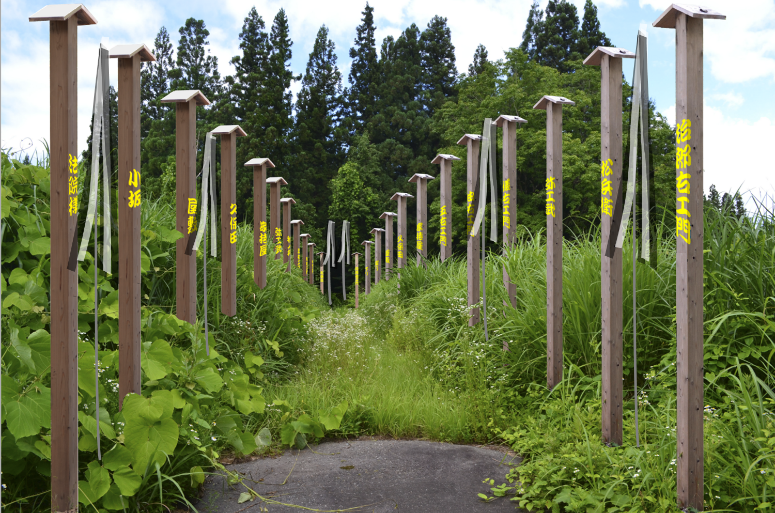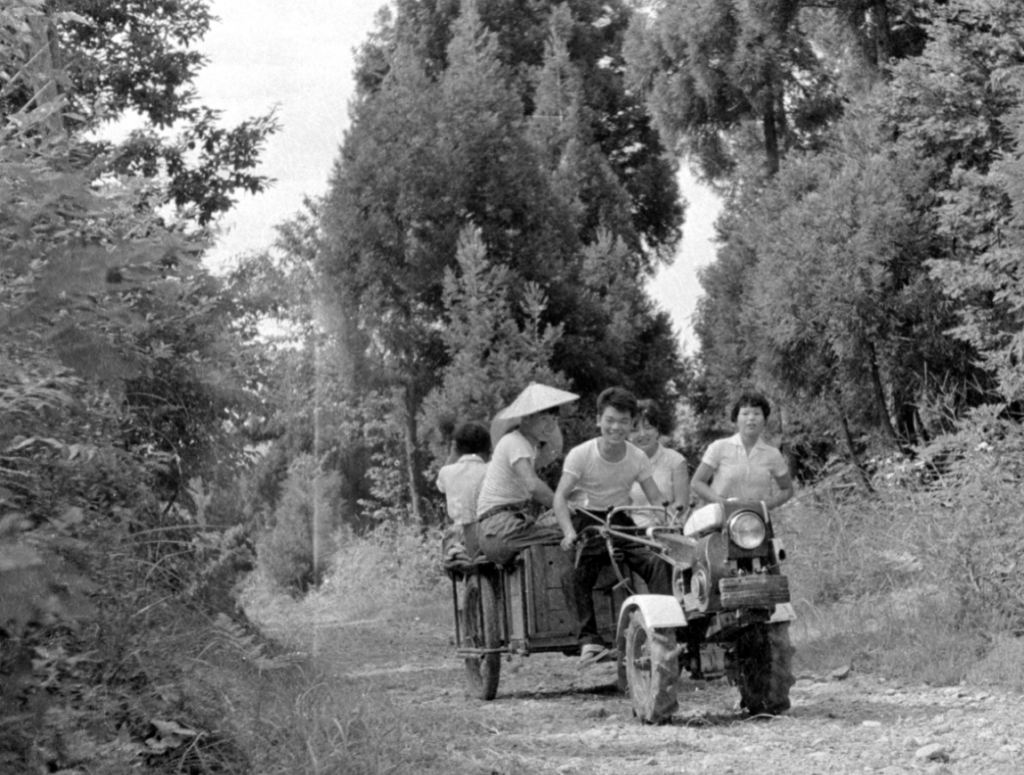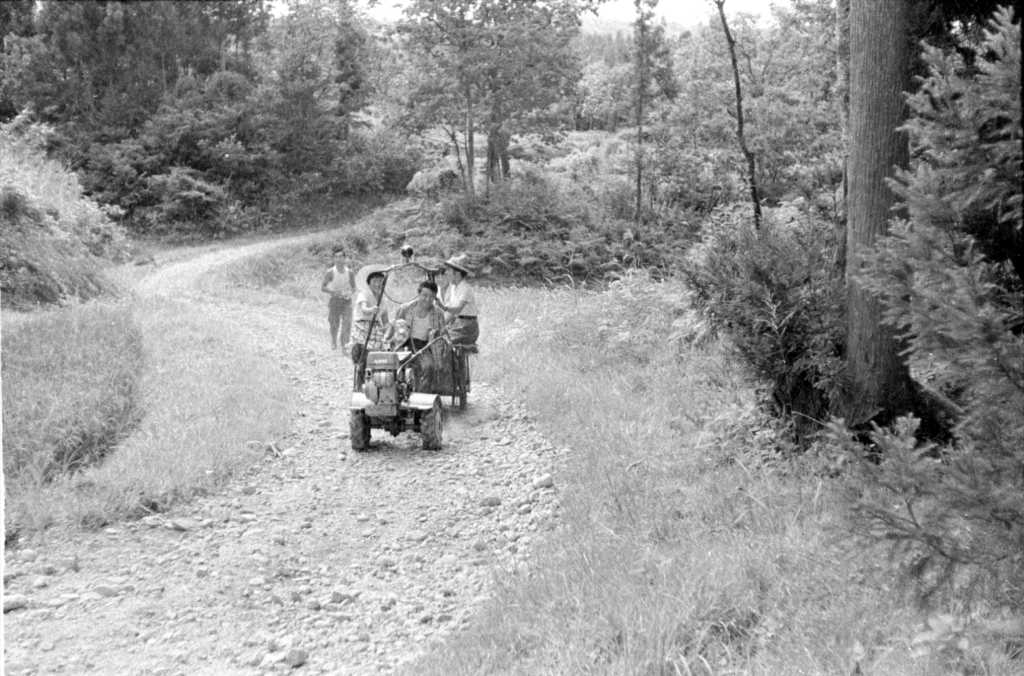Even Under the Severe Ostracism, a Glimmer of Compassion Remained During Funerals and Fires. From Fieldwork Using Anthropological Methods.
Download the English brochure here.
Introduction: Yukihisa Isobe
In an era where the Earth is boiling (as stated by the UN Secretary-General), we face escalating natural disasters, frequent conflicts in Eastern Europe and Africa, and a global food crisis. It is a time that compels us to reflect on what actions we can take.
The effectiveness of using ‘contemporary art’ rhetoric, originating from Western professional artists, to gain understanding from the people of Echigo Tsumari is extremely limited. Therefore, we are initiating consultations with the people of Echigo Tsumari to discern their expectations and needs for the art festival, including whether it is necessary, in these unprecedented times. Merely explaining and responding to local residents under the guise of participation fails to uncover their actual needs in this new era. In the 2022 art festival, Mr. Buichi Niwano helped us by collecting and summarizing the opinions and reactions of visitors regarding the two projects in the former Kotsunagi village. In his summary, Mr. Buichi Niwano pointed out issues in the way information is disseminated to local residents, those who have relocated for various reasons, and those connected to the area. Thus, we asked Mr. Sansei Niwano to draft a proposal for the 2024 Echigo Tsumari Art Trien-nale, reflecting the demands of two former residents who lived in Nakajo Tobitari Kotsunagi settlement until the ‘resting village’ period. Based on this proposal, and with the agreement of the community, we have proceeded with the installa-tion. Below is the concept for the project.
The concept of ‘global’ once advocated for thinking on a worldwide scale about environment-tal issues while implementing actions locally. However, given the recent trends in the natural environment and social sciences, it becomes apparent that this reality is reversing. Natural disasters like floods, droughts, extreme heat, unusual typhoon tracks, and intense rains (linear rainbands) are now a global phenomenon. Despite their widespread occurrence, the impacts of these events vary significantly due to the specific local conditions. This highlights why adopting a ‘Local First’ approach is becoming increasingly critical.

For the 2024 Echigo-Tsumari Art Triennale Project by Yukihisa Isobe: Sansei Niwano (Former Tobitari Nakajo Kotsunagi Settlement Resident
Concept
Due to the declining birthrate and aging population, former mountain villages are rapidly closing across the nation. The Kotsunagi settlement in Nakajo, Tokamachi City, is one such example. However, looking back at the village’s history, there was a time when it was vibrant, particularly in the mid-1950s. Recreating a glimpse of this vibrant past through art is significant as it not only evokes nostalgia but also visualizes the original essence of the Japanese people. Key cultural elements include the cultivator and handcart culture (before the private car era) that fascinated young villagers and the community-based funeral culture where villagers cooperated. Expressing these cultures in Kotsunagi can help us re-recognize a page of post-war history in the Showa era, providing a deeper understanding of the unique agricultural practices and communal traditions that defined rural Japan.
Precursor to the Private Car Culture
Many photos from the late 1950s at Buichi Niwano’s home show young people in Kotsunagi joyriding with a power tiller pulling a cart. The introduction of the power tiller significantly changed the village’s farming practices. Before this, farming involved manual labor and the use of cattle and horses. The power tiller improved the efficiency of plowing and also made it easier to transport harvested rice bundles to the ‘haza’ drying racks (locally termed ‘hatte’). Young villagers were captivated by this new culture, and the sight of them joyriding with power tillers and carts foreshadowed the arrival of the private car culture. This transitional period was, in many ways, the last shining era for the mountain villages.
Funeral Culture
The Japanese people are characterized by a spirit of ‘harmony’ that values unity. Although Tobitari-Nakajo Kotsunagi settlement was not directly involved, the concept of ‘mura-hachibu’ (village ostracism), which generally carries a stigma, still encompasses ‘two parts of mercy’—applicable during fires and funerals, indicating that even in contexts of social exclusion, there remains a sliver of communal support in times of utmost need. When these events occurred, the entire village would come together to assist. There was a crematorium in Kotsunagi where deceased villagers were cremated. By visualizing how the village mobilized during funerals, we can further illustrate the profound spirit of ‘harmony’ that defines the Japanese ethos.
Towards Realizing the Past Lifestyle
We will display panels based on photos left at Takeshi Niwano’s home to depict the power tiller and cart culture. The number of panels and their arrangement will be decided accordingly. For funeral culture, we will restore the path from the ‘guidance place during funerals’ shown previously to the actual crematorium that once existed. This path, less than 5 minutes on foot, will be rerouted through intermingled beech and cedar forests to showcase the unique vegetation of the snow country.

The Funeral Culture Fostered the Spirit of ‘Harmony’ in the Village: Sansei Niwano
How Funerals were Conducted
In Kotsunagi, the village was divided into four groups to manage funerals:
・Inside Group: Responsible for cleaning the house, preparing dishes and utensils, cooking meals, and setting up to welcome guests.
・Outside Group: Tasked with notifying relatives and temples, acting as messengers.
・Other Two Groups: Involved in constructing the pyre at the cremation site and carrying the coffin.
Note: Unlike today, there were no phones or cars; all tasks were coordinated and carried out on foot, with each group sharing responsibilities according to the needs of the funeral.
Preparing the Coffin
Unlike today, all coffins were vertical. Village carpenters made them, and it was customary to pay them three times their usual daily wage. It was a widely held belief that entering a coffin would ensure a long life, leading to tales of children who playfully entered only to struggle to get out.
After placing the body in the coffin, a roof in the traditional “miya-zukuri” style was added on top, and it was set on carrying poles. Decorations other than red were added to complete the coffin.
The Funeral
In Kotsunagi, where different Buddhist sects coexist—the Joudo Sect in the Niwano-maki district and the Soutou Sect in Harukawa-maki district—the funeral procession starts with a person holding a torch, followed by about 5-10 children, each carrying a flagpole adorned with a mythical dragon, symbolizing spiritual protection and auspicious powers. The procession includes relatives, primary family members, the chief mourner in traditional white attire, and family members handling condolence money. It is led by a priest and concluded with four pallbearers. The length of the procession signifies the importance of the deceased within the village. Children at the forefront are advised not to stumble, as falling is considered to bring misfortune, making them walk with utmost caution.
The Guidance Place
The guidance place, located at the edge of the village (in Kotsunagi, it was a small square above Kubota), is where the final prayers were recited, marking the completion of the funeral. Here, all decorations were removed from the coffin, which was then solemnly carried on the back to the burning ground.
The Burning Ground
In Japan, cremation is a common Buddhist practice, reflecting deep cultural and spiritual beliefs. The fuel for the cremation consisted of cedar leaves, brushwood, and firewood, making it challenging to completely burn the body. The person in charge of the burning ground, known as “yamagoshai,” was tasked with overseeing the fire until the end of the funeral feast. This duty involved regular checks, especially since the body would sometimes roll out of the flames and had to be repositioned back to the center. The watchman, usually a relative, would occasionally leave to drink sake at the mourner’s house, ensuring the fire was maintained properly throughout the night. Unlike modern crematoriums with their powerful flames, these traditional fires required constant attention and adjustment, adding to the difficulty of the task.
Afterward
The funeral activities continued with the collection of bones, chanting of sutras, and a “gratitude gathering” to thank those who volunteered their help. This was followed by the “cleaning of the cutting board” (a ceremony marking the end of the vegetarian mourning period) and altogether, the funeral rites lasted about 7-8 days. The entire village participated earnestly in each ceremony. Today, the only person in Kotsunagi who fully understands these traditional funeral rites is Mr. Buichi Niwano. Nonetheless, it is undeniable that these funerals played a significant role in strengthening the community bonds. Mr. Buichi Niwano noted, “The people of Kotsunagi were very close-knit!” Through the practice of funerals, the former villagers cultivated a spirit of ‘harmony’ and lived by helping each other. As the COVID-19 pandemic subsides, many foreigners have begun to visit Japan again. Upon their arrival, they often express gratitude for the beauty of Japan and the kindness of its people. It is believed that one of the foundations supporting these values is the practice of funerals. Through these rituals, the uniquely Japanese spirit of ‘harmony’ has been passed down, embodying the essence of the Japanese ethos.
Precursor to the Private Car Culture : Photo provided by Buichi Niwano
Numerous photos remain at the home of Buichi Niwano, showing scenes from the late 1950s of young people from Onuki riding in carts pulled by power tillers, driving around the area. (See above)



